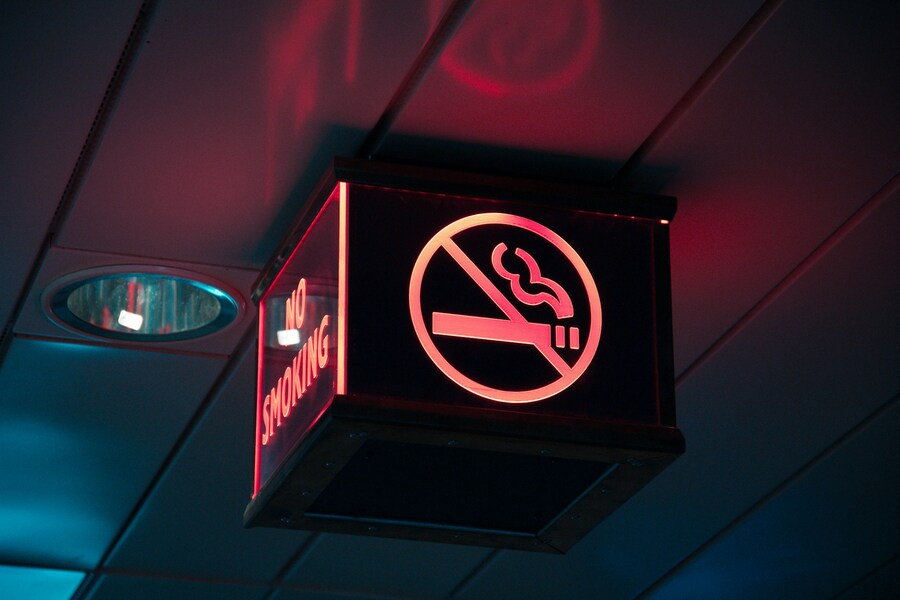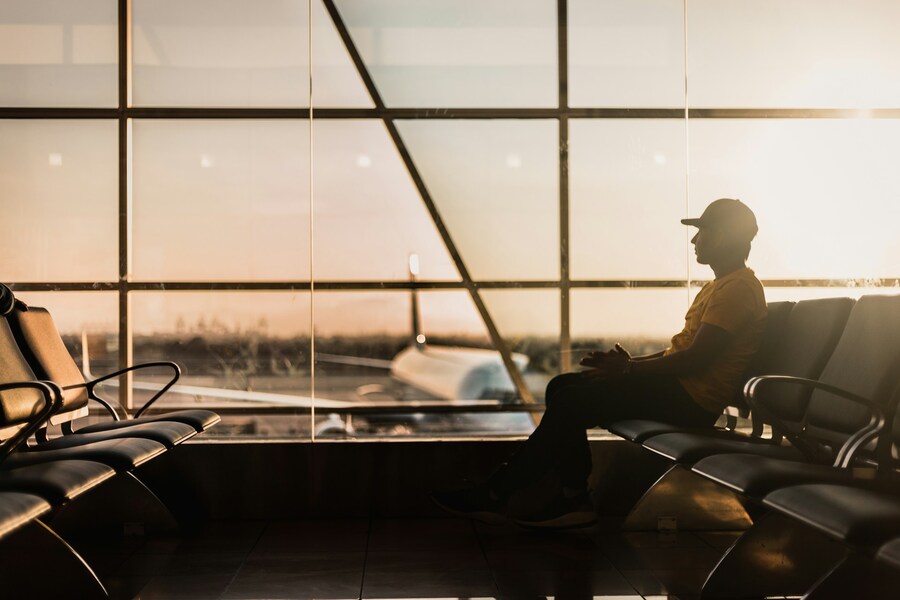The magic of air travel, transforming hours on the ground into minutes in the sky, is a modern marvel. Yet, beneath the veneer of seamless service and reclining seats, the world of aviation is governed by a labyrinth of often-unseen regulations, some established for critical safety, others rooted in surprising historical or financial necessity. As a passenger, you're expected to comply with the obvious – keeping your seatbelt fastened, stowing your tray table – but a deeper dive reveals a set of lesser-known, and sometimes downright bizarre, rules that dictate how airlines, crew, and even fellow passengers operate. These aren't just polite suggestions; they are enforceable policies that can affect your journey, your access to services, and even your eligibility to fly. Understanding these subtle yet powerful mandates can transform you from a casual traveler into a truly informed globetrotter.
So, what little-known rules could impact your next flight?
No chit-chat for pilots under 10,000 feet

Source: Adem AY/Unsplash
One of the most critical safety regulations in modern aviation centers on the Sterile Cockpit Rule, a mandate that strictly limits communication within the cockpit, particularly during the most vulnerable phases of flight: taxiing, takeoff, and landing, generally defined as below 10,000 feet. This rule is a direct response to historical accidents that revealed how casual conversation and unnecessary distractions could divert a pilot's attention away from critical tasks. Below this altitude, the aircraft is moving at high speed, closer to the ground, and navigating complex airspace with significantly increased demands on pilot cognition.
Consequently, pilots are prohibited from engaging in any non-essential conversation, a seemingly simple rule with profound implications for safety. This means no casual banter, no discussion of vacation plans, and certainly no interaction with flight attendants or maintenance crew unless the conversation directly pertains to the immediate operation of the aircraft. Even if the captain is a garrulous individual, the law demands silence and focus. For the passenger, this rule explains why announcements are rare during takeoff and landing phases and why the cockpit door remains resolutely closed and guarded. It's a necessary silence, ensuring that all available mental resources are dedicated to the safe handling of the aircraft during its most demanding moments.
Some seats are no-go zones
While every seat on an aircraft is a purchasable asset, not every seat is available to every passenger, and for good reason. The most common restriction relates to exit row seating. These seats, which often offer desirable extra legroom, come with a non-negotiable set of responsibilities. Federal regulations require that passengers occupying exit rows must be physically capable of operating the emergency exit door in case of an evacuation. This means no person under a certain age (typically 15), no one requiring the use of a seatbelt extension, and no one with a condition that would impede their ability to assist others can be seated there.
Beyond the exit rows, other seats can become "no-go zones" based on specific operational needs. For example, some airlines reserve the seat immediately next to a critical piece of equipment or a jumpseat area for crew rest or positioning. Occasionally, a seat might be blocked due to a minor repair need, an inoperative entertainment system, or to balance the aircraft's weight distribution, a critical, though invisible, part of pre-flight preparation. While you might try to switch to a seemingly empty row, flight attendants have the final say, often based on these non-apparent, operational necessities.
Bad odors can get you bumped
While airlines are often scrutinized for bumping passengers due to overbooking, a lesser-known reason for denying boarding or removing a passenger is a subjective yet enforceable rule concerning offensive odors. Though it sounds like a rule from an etiquette book, it's a policy used by major carriers to protect the comfort and health of other passengers and crew. The language in the airline's Contract of Carriage often cites the right to refuse transport to anyone whose "odor is so offensive as to interfere with the comfort of other passengers or crew."
This rule isn't typically targeting poor hygiene alone. It can be applied to individuals with extremely pungent perfumes, colognes, or even odors resulting from medical conditions or carrying large amounts of smelly materials. Because aircraft cabins are sealed, pressurized environments with recirculated air, a pervasive and strong odor can genuinely impact the experience of everyone in the immediate vicinity, causing discomfort, headaches, or even nausea for those sensitive to smells. While rare, its enforcement highlights the airline's surprising power to manage the atmosphere of the cabin beyond mere safety concerns. It's a reminder that the confined space of a plane requires a high degree of consideration for fellow travelers.
"No Smoking" signs must still work

Source: Kristaps Solims/Unsplash
In the era of vaping and increasingly strict anti-smoking laws, the "No Smoking" sign above your seat might seem like an archaic relic – after all, smoking on commercial flights has been banned in the United States and many other countries for decades. However, the requirement that these signs must be functional and visible is a deeply ingrained and federally mandated regulation. This isn't just about reminding passengers of the rule; it's about maintaining a crucial operational standard.
The working "No Smoking" sign is tied into the aircraft's electrical systems and safety checks. It's one of many indicators the crew must verify before takeoff. If the light is inoperative, the aircraft can be grounded until the bulb is replaced or the wiring is fixed. The logic is simple: while the rule is universally understood, the operational ability of the sign demonstrates the aircraft's overall airworthiness and the functionality of essential cockpit and cabin systems. Moreover, despite the decades-old ban, federal aviation authorities still require planes to be equipped with at least one fully functional smoke detector in every lavatory and require that the "No Smoking" signage is ready for use, should the regulation ever be contested or ignored.
Flight attendants aren't paid while boarding
For many passengers, the journey begins the moment they step onto the plane, greeted by a uniformed flight attendant. Yet, a peculiar financial reality governs the crew's income: in many airlines, flight attendants' paid time doesn't begin until the aircraft cabin doors are closed and the aircraft officially pushes back from the gate. This means that the crucial, demanding work of boarding – assisting with luggage, managing seating conflicts, verifying exit row eligibility, and conducting security checks – is often done unpaid.
This operational loophole, known as "block-to-block" pay, is a contentious issue in the industry. It means attendants are working, sometimes strenuously, for a period that can last 30 minutes or more before receiving any compensation. This hidden reality underscores the importance of a passenger's cooperation during boarding. When travelers are slow, confused, or uncooperative, they are prolonging the unpaid working time of the crew members who are ultimately responsible for their comfort and safety. As a traveler, understanding this unique pay structure encourages efficiency and courtesy during the boarding process.
Before arriving at the terminal, travelers often need to arrange their transportation, and it's here that services like ParkingNearAirports.io become invaluable. They offer a range of solutions, from the budget-friendly economy parking to options with door-to-door service via a dedicated shuttle lot, helping travelers manage the often-confusing parking fees at airport. Ensuring smooth parking is the first step toward a stress-free flight experience, a goal that aligns with understanding the airline's own operational rules.
Seat 1A comes with its own guidelines
In First Class, Seat 1A (or sometimes 1K) is often considered the pinnacle of luxury, offering premium service and exclusivity. However, this prime real estate comes with a set of unique operational guidelines that can sometimes make the journey less flexible than other seats. Because Seat 1A is typically the closest seat to the bulkhead and often right next to the forward galley or lavatory, it's considered an "isolation" seat.
This proximity to critical areas means passengers in 1A might face more scrutiny from the crew. During takeoff and landing, all personal belongings, including small items like phones or magazines, must be stowed completely – often in the overhead bin, as there's no seat in front to hold them. This differs from other seats where small items can be placed in the seatback pocket. Moreover, passengers in this seat are often the first to be served, but their proximity to the galley also means they hear every clatter of the crew preparing service and every conversation taking place behind the curtain. It's a seat of privilege, but one where the passenger is a silent witness to the crew's operational workflow, demanding a level of discretion and consideration.
Skipping your last leg? Not allowed!

Source: Marco López/Unsplash
The practice known as "skiplagging" or "hidden-city ticketing" is an ingenious, if technically prohibited, way for savvy travelers to save money. This involves booking a flight with a layover (e.g., New York to Dallas via Chicago) but getting off at the layover city (Chicago) because the direct flight to that city was more expensive than the connecting one. While it appears to be a brilliant workaround, it violates the airline's Contract of Carriage – a binding legal agreement.
Airlines fiercely oppose this practice for 2 main reasons. First, it disrupts their complex pricing models, which rely on charging different fares for different segments based on demand. Second, and more importantly for operations, a "no-show" passenger at the gate for the second leg creates delays. The airline is required to offload the passenger's checked baggage before the plane can depart, which takes time and labor. Consequently, if an airline detects a passenger engaging in this practice, they have the right to cancel the passenger's remaining itinerary, forfeit any miles or loyalty points, and even retroactively charge the difference between the ticket purchased and the ticket used. The rule against skipping a flight segment is a powerful financial and operational tool the airline uses to ensure passengers adhere to the intended itinerary.
The bottom line
The world of air travel, governed by intricate layers of federal, international, and corporate regulations, is far more complex than the average passenger realizes. These 7 weird rules – from the mandated silence of the cockpit below 10,000 feet to the subtle financial penalty of engaging in skiplagging – do more than just offer trivia; they provide a crucial glimpse into the mechanisms that keep aviation safe, orderly, and economically viable. They underscore a fundamental truth: a flight is a shared ecosystem, and the comfort, safety, and efficiency of the journey depend not only on the professionals at the controls but also on the informed cooperation of every passenger. By understanding these unspoken operational and contractual mandates, travelers can navigate the skies with greater awareness, respect, and ultimately, a smoother journey.






